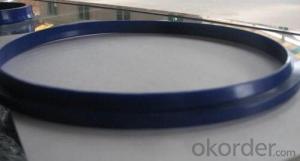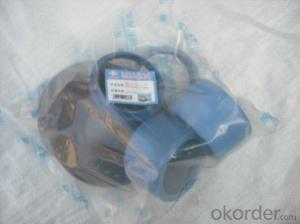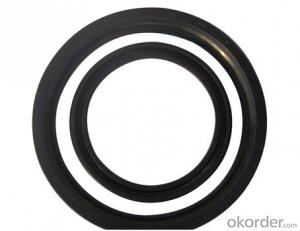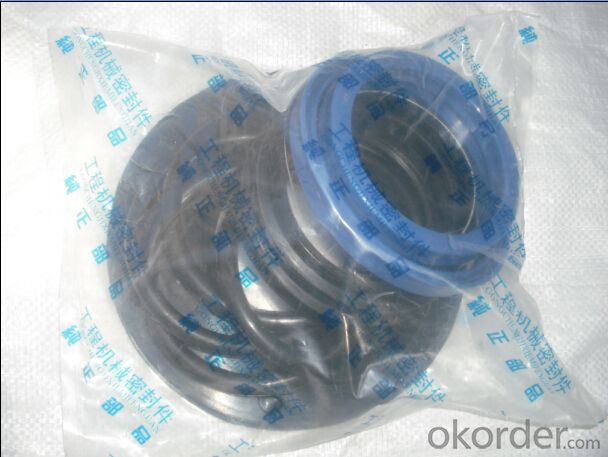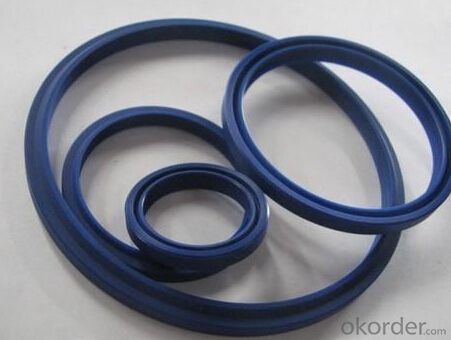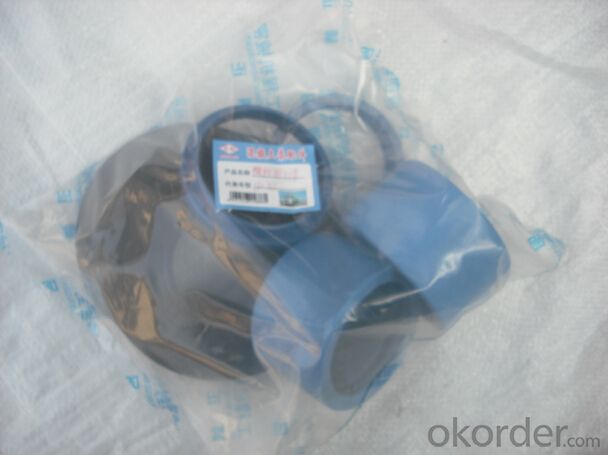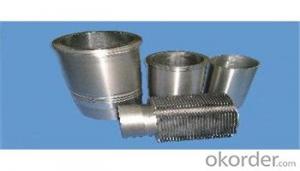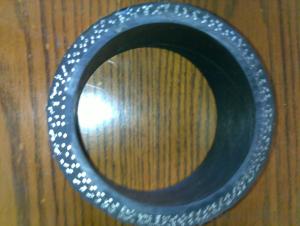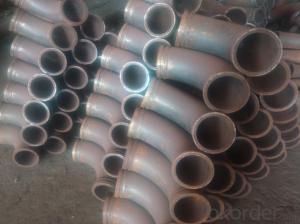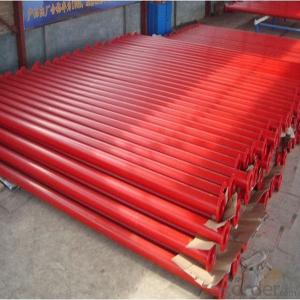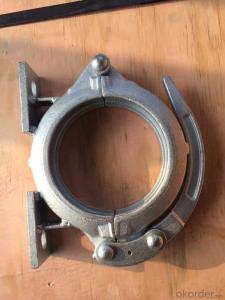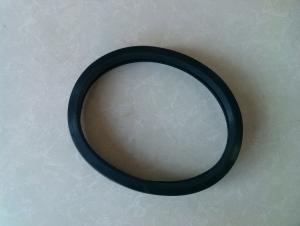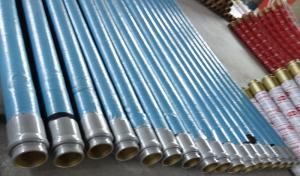ZOOMLION 80 SEAL KIT FOR CYLINDER HIGH QUALITY
- Loading Port:
- Tianjin
- Payment Terms:
- TT OR LC
- Min Order Qty:
- 10 set
- Supply Capability:
- 500 set/month
OKorder Service Pledge
OKorder Financial Service
You Might Also Like
ZOOMLION 80 SEAL KIT FOR CYLINDER HIGH QUALITY
Specifications
Name: Concrete Pump Zoomlion seal kit
colors:black,blue,brown and so on
materials:NBR,BR,NR,SBR and EPDM
Concrete pump zoomlion seal kit for upper housing
seal kit for agitator motor
seal kit to outer housing
seal kit for discharge pipe
seal kit for delivery cylinder
seal kit for plunger cylinder
Seal kit for main cylinder
SEAL KITS PUTZMEISTER,SCHWING, SANY, ZOOMLION
SPARE PARTS FOR CONCRETE PUMP
--AGITATOR MOTOR
--S TUPE FOR 80&90
--MIXER SHAFT
--MIXER FLANGE
--ROCK VALVE
--PLUNGER CYLINDER
--SLEWING SHAFT
--SEAL KITS FOR CYLINDER
--DELIVERY PIPES & ELBOW
--DELIVERY PISTON RAM
--CLAMPS FOR SCHWING AND PUTZMEISTER
--SCHWING SPARE PARTS
--PUTZMEISTER SPARE PARTS
--CIFA SPARE PARTS
--KYOKUTO SPARE PARTS

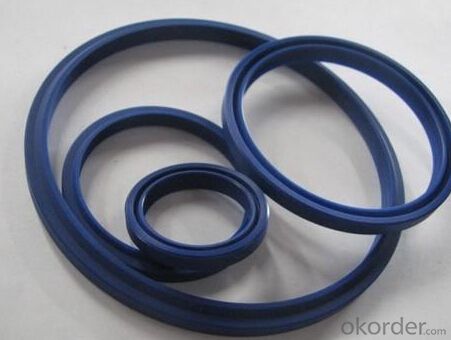
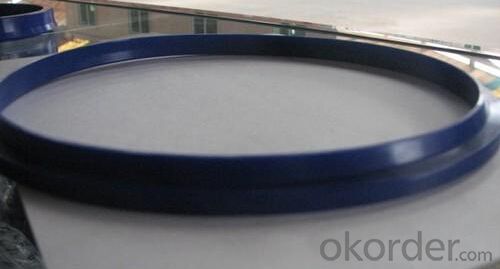
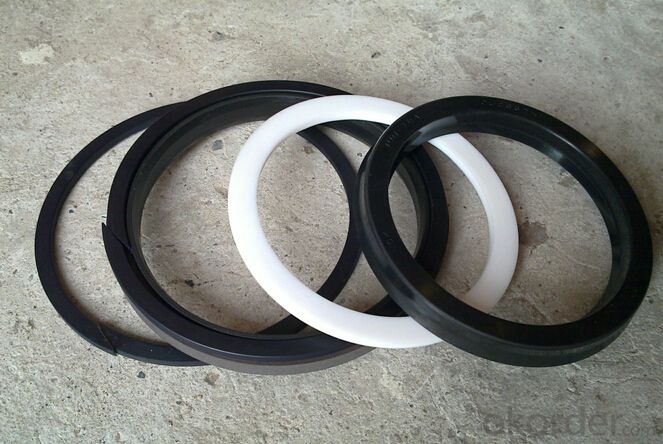
- Q: What are the different types of concrete pump wear rings?
- There are primarily two types of concrete pump wear rings: stationary wear rings and rotating wear rings. Stationary wear rings are fixed in position and provide a surface for the rotating wear ring to slide against. Rotating wear rings, on the other hand, are designed to spin with the impeller and prevent direct contact between the impeller and stationary wear ring, reducing friction and extending the life of the pump.
- Q: How do I properly maintain and replace hydraulic valves in concrete pump spare parts?
- To ensure the smooth operation and long life of your concrete pump spare parts, it is crucial to properly maintain and replace the hydraulic valves. Here are some guidelines to follow: 1. Conduct Regular Inspections: Regularly inspect the hydraulic valves for wear, damage, or leaks. Look for visible defects like cracks, corrosion, or other signs of deterioration. It is important to identify and address any issues early on to prevent further damage. 2. Maintain Cleanliness: Keep the hydraulic valves clean to prevent dirt, debris, or contaminants from entering the system. Use an appropriate cleaning agent and a lint-free cloth to wipe the valves and remove any buildup. 3. Ensure Proper Lubrication: Proper lubrication is vital for the smooth functioning of hydraulic valves. Consult the manufacturer's guidelines to determine the suitable lubricant and the recommended lubrication schedule. Apply the lubricant as instructed. 4. Promptly Replace Damaged Valves: If a hydraulic valve is beyond repair or excessively worn out, it is crucial to replace it promptly. Consult the equipment's manual or seek guidance from the manufacturer to identify the correct replacement valve. Make sure the replacement valve matches the required specifications for your concrete pump. 5. Seek Professional Assistance: While operators can handle some maintenance tasks, it is advisable to seek professional assistance for complex maintenance and replacement procedures. Professional technicians possess the expertise and knowledge to handle hydraulic valves safely and effectively. 6. Prioritize Safety: Always adhere to proper safety protocols when working with hydraulic valves. Release all pressure and fully depressurize the system before attempting any maintenance or replacement. Wear appropriate personal protective equipment, such as gloves and safety goggles, to safeguard yourself from potential hazards. In conclusion, regular maintenance, timely replacement, and adherence to safety guidelines are crucial for maintaining and replacing hydraulic valves in concrete pump spare parts. By following these steps, you can ensure the reliable and efficient operation of your equipment.
- Q: How can one determine the correct viscosity and temperature range for lubricants used in concrete pump spare parts?
- Determining the appropriate viscosity and temperature range for lubricants used in concrete pump spare parts requires the consideration of multiple factors. Below are some steps that can assist in determining the suitable viscosity and temperature range: 1. Refer to the manufacturer's recommendations: To begin with, consult the specific guidelines or recommendations provided by the manufacturer for the concrete pump spare parts. The manufacturer may specify the required viscosity and temperature range for the lubricants used in their equipment. 2. Gain a clear understanding of the operating conditions: It is essential to have a comprehensive understanding of the operating conditions in which the concrete pump spare parts will be utilized. Factors such as ambient temperature, pump speed, load, and pressure should be taken into account. These factors can significantly impact the viscosity requirements and temperature range of the lubricant. 3. Assess the performance characteristics of the lubricant: Different lubricants possess distinct performance characteristics that make them suitable for particular applications. Look for lubricants specifically formulated for heavy-duty tasks, offering excellent wear protection and displaying good thermal stability. These performance characteristics ensure that the lubricant can endure the demanding conditions of a concrete pump. 4. Viscosity requirements: The viscosity of the lubricant plays a crucial role in ensuring proper lubrication and safeguarding of the concrete pump spare parts. Heavy-duty applications generally require higher viscosity lubricants, while lighter loads may be better suited with lower viscosity lubricants. The viscosity requirements may also differ depending on the specific pump parts, such as bearings, gears, or seals. Referring to the manufacturer's guidelines and seeking advice from lubricant suppliers can help determine the ideal viscosity range for the concrete pump spare parts. 5. Consider the temperature range: The temperature range within which the concrete pump operates is another significant aspect to consider. Lubricants should be capable of maintaining their viscosity and performance across the expected temperature range. Extreme temperatures can cause lubricants to lose their effectiveness, potentially leading to equipment damage or failure. Consequently, it is important to select lubricants with a temperature range suitable for the operating conditions of the concrete pump. 6. Consult with experts: If uncertainty persists regarding the appropriate viscosity and temperature range, it is advisable to seek advice from lubricant manufacturers, suppliers, or industry experts. They can offer valuable insights and recommendations based on their expertise and experience with concrete pump spare parts. By adhering to the manufacturer's recommendations, comprehending the operating conditions, evaluating the lubricant's performance characteristics, and seeking professional advice, it becomes possible to determine the correct viscosity and temperature range for lubricants used in concrete pump spare parts. This will ensure optimal lubrication and extend the lifespan of the equipment.
- Q: How often should concrete pump lubrication systems be inspected and maintained?
- To ensure proper functioning and longevity, it is essential to regularly inspect and maintain concrete pump lubrication systems. The frequency of inspections and maintenance will vary depending on factors such as the pump type, usage, and manufacturer's recommendations. Typically, it is advised to conduct monthly inspections and maintenance of concrete pump lubrication systems. This regularity allows for early detection of potential issues or wear and tear that may require attention. Furthermore, routine inspections help identify signs of lubricant degradation or contamination, which can affect the system's efficiency and performance. During the inspection, it is crucial to check for leaks, damaged or worn-out components, and ensure adequate greasing of all lubrication points. Additionally, the lubrication system should be cleaned to eliminate any accumulated debris or contaminants. Apart from monthly inspections, certain maintenance tasks should be carried out at regular intervals. These tasks may include lubricant and filter changes, belt and hose adjustments or replacements, and checking the system's pressure and flow to ensure proper operation. It is important to emphasize that the manufacturer's guidelines and recommendations must always be followed for inspecting and maintaining concrete pump lubrication systems. These guidelines may provide specific instructions based on the pump type and model, as well as any unique requirements. By regularly inspecting and maintaining concrete pump lubrication systems, optimal performance can be ensured, downtime can be minimized, and the lifespan of the systems can be extended.
- Q: How often should hopper pins be inspected or replaced in a concrete pump?
- To guarantee the safe and efficient operation of concrete pump equipment, it is imperative to regularly inspect and replace hopper pins. The frequency of these inspections and replacements depends on various factors, including the concrete pump's usage and the condition of the hopper pins. As a general rule, it is advised to inspect hopper pins every three to six months or after every 400 to 600 hours of operation. However, it is crucial to note that this timeframe can differ depending on the intensity and volume of concrete pumping activities. During the inspection, it is necessary to carefully examine the hopper pins for any indications of wear, damage, or deformation. If any pins display significant signs of wear, such as cracks, elongation, or excessive corrosion, they should be promptly replaced to prevent potential accidents or equipment failure. Maintaining the structural integrity of the concrete pump and ensuring the safety of operators and the surrounding environment rely heavily on regular inspection and replacement of hopper pins. It is advisable to consult the manufacturer's guidelines or seek professional advice to determine the specific schedule for inspection and replacement, considering the make and model of the concrete pump.
- Q: How do I properly adjust and control flow rates in concrete pump spare parts?
- To properly adjust and control flow rates in concrete pump spare parts, there are a few key steps to follow: 1. Understand the equipment: Familiarize yourself with the specific concrete pump spare parts you are working with. Read the user manual and refer to any documentation provided by the manufacturer. This will help you gain a comprehensive understanding of the equipment's capabilities and how to adjust flow rates effectively. 2. Check the pump settings: Before starting any concrete pumping operation, ensure that the pump settings are properly configured. This includes checking the hydraulic pressure, engine RPM, and any other relevant settings. Make sure all valves and controls are in the correct position for the desired flow rate. 3. Monitor the pump speed: The speed of the pump directly affects the flow rate of the concrete. Different concrete mixtures may require different pump speeds to achieve the desired flow rate. Adjust the engine RPM accordingly, referring to the manufacturer's recommendations and any specific requirements for the project. 4. Adjust the pump stroke: Most concrete pumps have adjustable pump strokes to control the flow rate. By changing the length of the stroke, you can increase or decrease the volume of concrete being pumped. Experiment with different stroke lengths to find the optimal flow rate for your specific application. 5. Use the control panel: Many concrete pumps come equipped with a control panel that allows for precise adjustment of flow rates. Take advantage of these features to fine-tune the flow rate. Use the control panel to monitor the pump's performance and make any necessary adjustments to maintain a consistent flow. 6. Regularly inspect and maintain the equipment: Proper maintenance is crucial to ensure the accurate adjustment and control of flow rates. Regularly inspect the concrete pump spare parts for any signs of wear or damage. Clean and lubricate the components as recommended by the manufacturer. A well-maintained pump will operate more efficiently and provide more accurate control over flow rates. By following these steps, you can properly adjust and control flow rates in concrete pump spare parts. Remember to always prioritize safety and consult the manufacturer's instructions and guidelines for specific recommendations and considerations.
- Q: What are the potential risks associated with the installation and replacement of concrete pump spare parts?
- There are several potential risks associated with the installation and replacement of concrete pump spare parts. One of the main risks is the possibility of improper installation. If the spare parts are not installed correctly, it can lead to issues such as leaks, decreased performance, and even equipment failure. This can not only result in costly repairs but also pose a safety hazard to workers and those in the surrounding area. Another potential risk is the use of counterfeit or low-quality spare parts. These parts may not meet the necessary standards and specifications, which can compromise the integrity and functionality of the concrete pump. This can also increase the risk of equipment failure and accidents. Additionally, the installation and replacement process may require workers to operate heavy machinery, such as cranes or forklifts, which can be hazardous if not done properly. There is a risk of accidents, injuries, or damage to the equipment or surrounding structures if adequate precautions are not taken. Furthermore, concrete pump spare parts may contain hazardous materials or substances. Workers need to be aware of the potential risks associated with handling and disposing of these materials, such as exposure to harmful chemicals or environmental contamination. Lastly, there is a risk of delays and downtime during the installation and replacement process. If spare parts are not readily available or if there are issues with their compatibility, it can result in extended periods of equipment inoperability. This can lead to project delays, increased costs, and potential financial losses. To mitigate these risks, it is important to ensure proper training and supervision of workers involved in the installation and replacement of concrete pump spare parts. Using genuine and high-quality spare parts from reputable suppliers can also reduce the risk of equipment failure. Regular inspections, maintenance, and adherence to safety protocols are crucial to minimize the potential risks associated with this process.
- Q: Do concrete pump spare parts come with a warranty?
- Certainly, a warranty is provided for concrete pump spare parts. The duration of the warranty may differ depending on the manufacturer and the specific part being acquired. Typically, well-established manufacturers and suppliers offer warranties on their spare parts to instill confidence in customers regarding the product's quality and dependability. It is crucial to thoroughly examine the warranty's terms and conditions to comprehend the coverage and duration. Should any flaws or complications arise within the warranty period, customers can usually obtain a replacement or have the part repaired without incurring any additional expenses.
- Q: How does a concrete pump hopper grate prevent clogs?
- A concrete pump hopper grate plays a crucial role in preventing clogs by acting as a filter and allowing only the required size of aggregate or material to pass through. It is designed with small openings or grids that are strategically placed to catch any excess debris, rocks, or large particles that can potentially cause clogs in the pump system. As the concrete mixture is poured into the hopper, the grate acts as a barrier, ensuring that only the properly sized material passes through while obstructing any larger or unwanted debris. This helps maintain the smooth flow of concrete through the pump system, preventing any blockages or jams that can disrupt the construction process. Moreover, the grate is often made of durable materials such as steel or high-density polyethylene, which are resistant to wear and tear. This ensures that it can withstand the high-pressure environment and continuous operation without being damaged or deformed. Regular maintenance and cleaning of the hopper grate are also essential to prevent clogs. By regularly inspecting and removing any accumulated debris or build-up, operators can ensure that the grate remains clear and fully functional, preventing potential clogging issues. In summary, a concrete pump hopper grate prevents clogs by acting as a filter, allowing only the required size of aggregate to pass through while catching any larger particles or debris. Its design and material durability ensure a smooth flow of concrete through the pump system, minimizing the risk of blockages and maintaining the efficiency of construction operations.
- Q: Can I reuse old concrete pump spare parts?
- Reusing old concrete pump spare parts is a possibility, depending on their condition. In the event that the spare parts are in good working order and successfully pass the required inspections, they can be reused to cut costs and minimize waste. Nevertheless, it is crucial to verify that the recycled spare parts are suitable for the specific model and type of concrete pump in use. Seeking advice from a professional or the manufacturer is advised in order to ascertain the safety of reusing the old spare parts.
Send your message to us
ZOOMLION 80 SEAL KIT FOR CYLINDER HIGH QUALITY
- Loading Port:
- Tianjin
- Payment Terms:
- TT OR LC
- Min Order Qty:
- 10 set
- Supply Capability:
- 500 set/month
OKorder Service Pledge
OKorder Financial Service
Similar products
Hot products
Hot Searches
Related keywords
